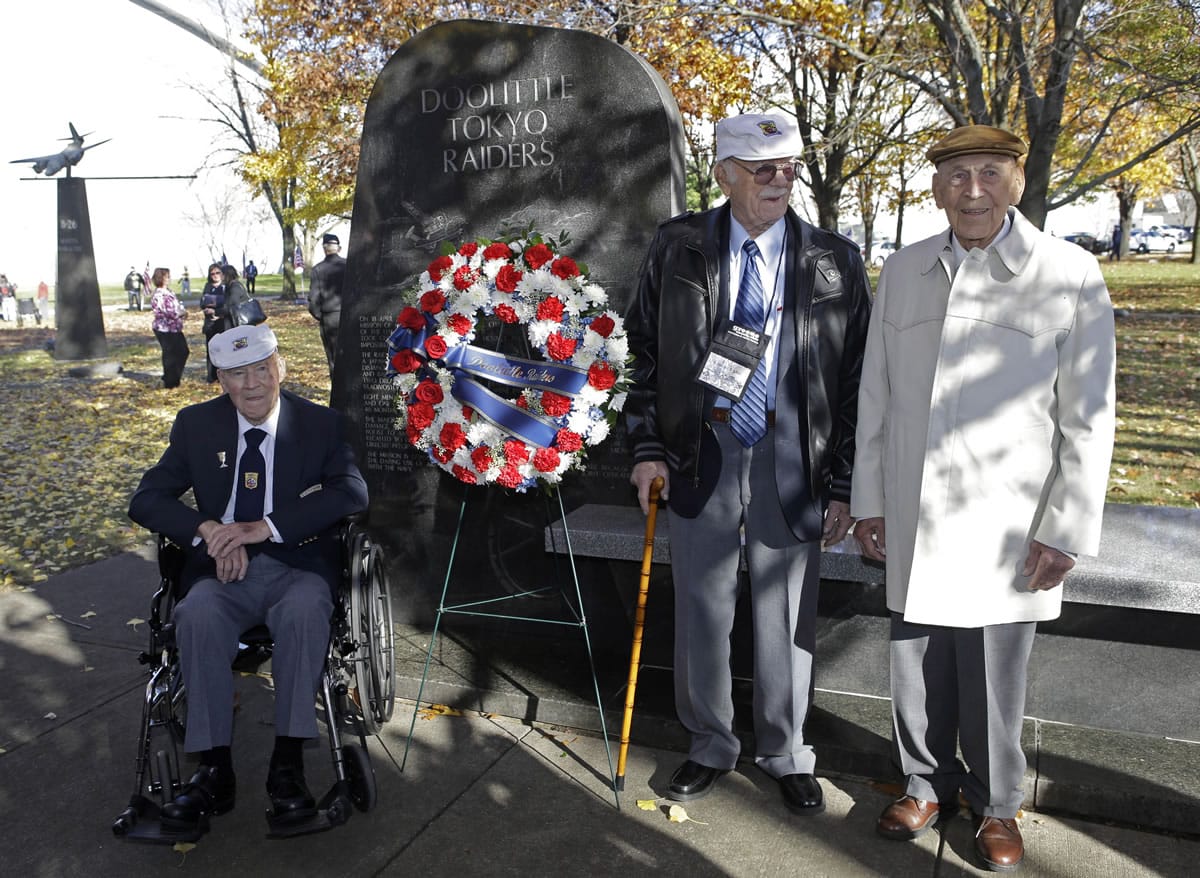Vancouver airman Wayne Bissell was a Doolittle Raider.
Bissell was one of five men on the “Whirling Dervish,” the ninth B-25 bomber to take off from the USS Hornet on April 18, 1942.
Bissell died Jan. 9, 1997, at age 75.
The 1939 graduate of Vancouver High School was the crew’s bombardier, dropping three 500-pound demolition bombs and a 500-pound incendiary cluster on targets in Tokyo.
Their top-secret Norden bombsights had been removed from the bombers so they couldn’t later fall into enemy hands. Bissell and the other bombardiers found their targets using 20-cent bombsights they’d built in a machine shop at their training base.
After flying 300 miles into China, the Army sergeant and his crewmates bailed out of their plane as it ran out of fuel in the middle of the night, in a storm.



